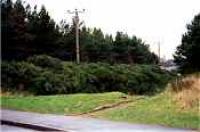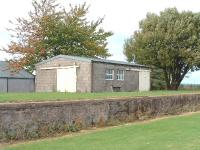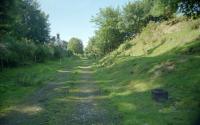Morayshire Railway
Introduction
This railway is closed. The railway provided a service from Lossiemouth to Elgin [GNSR] and from Elgin [GNSR] to Craigellachie [2nd] where connection was made with the Strathspey Railway. A connection existed between Rothes and Orton on the Highland Railway. At Lossie Junction the Morayshire Railway was joined by the Moray Coast Railway (Great North of Scotland Railway).
Dates
Portions of line and locations
This line is divided into a number of portions.
Elgin to Lossiemouth
This closed station still exists, the substantial building now in use as business premises. To the south of the building the railway still runs, providing access to the terminus's goods yard.
...

Crinan Dunbar 06/09/2021
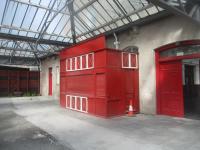
David Bosher 15/06/2019
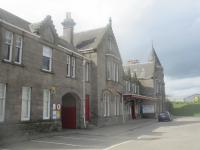
David Bosher 15/06/2019
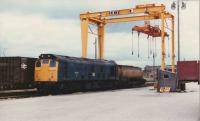
Crinan Dunbar //1982
This coal yard consisted of a pair of sidings served from the west. The sidings followed the west to north curve of Maisondieu Road, running from east of Elgin East station and approached via reversal in the goods yard. The sidings are lifted.
...
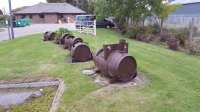
Crinan Dunbar 08/10/2017
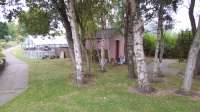
Crinan Dunbar 08/10/2017

Crinan Dunbar 08/10/2017
The original Morayshire Railway shed of 1852 was just east of Elgin East and south of the line (but north of the Inverness and Aberdeen Junction Railway. This was a two road shed.
...

Bill Roberton //1977
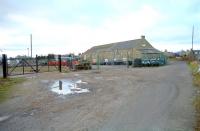
Ewan Crawford //1998
This four road shed replaced Elgin Shed [1st]. It was probably opened in 1902, the great reconstruction of Elgin [GNSR] station. This rebuilding made access to the original shed awkward and, with steady increase in traffic, inadequate with its two roads.
...
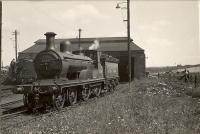
G H Robin collection by courtesy of the Mitchell Library, Glasgow 04/07/1950
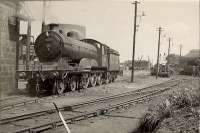
G H Robin collection by courtesy of the Mitchell Library, Glasgow 04/07/1950
This junction was east of Elgin [GNSR] station. The junction was formed in 1862 when the course of the original portion of the Morayshire Railway from Elgin to Lossiemouth of 1852 was met by its later route via Longmorn to Rothes of 1862.
...
This junction was just north of Elgin. This is where the Moray Coast Railway (Great North of Scotland Railway) met the older Morayshire Railway at a junction giving access to Elgin [East].
...
See also
Moray Coast Railway (Great North of Scotland Railway)
This was a halt at the Linksfield Level Crossing, just north of Lossie Junction near Elgin [East]. There was a short platform on the west side of the line, just south of the level crossing itself.
...
This was a small halt at Wester Greens. There was a very short platform on the east side of the line where the line crossed a drainage ditch.
...
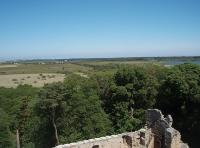
Mark Bartlett 02/07/2011
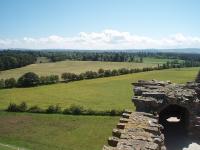
Mark Bartlett 02/07/2011
This halt was just south of Lossiemouth. It served a Second World War rifle range. Largely used by the Territorial Army.
...
This was a single platform station with a large goods yard. The yard was located to the east of the passenger station and extended to the quaysides of the inner harbour.
...

Brian Haslehust 17/08/1963

Peter Todd /01/1979

Peter Todd /01/1979

Peter Todd Collection //
Orton to Craigellachie
This was the junction between the Inverness and Aberdeen Junction Railway and the extension of the Morayshire Railway south to Craigellachie [1st]. Both lines were single track and opened in 1858. The junction was south of Orton station and west of the [Boat o' Brig Viaduct] on the main line east to Aberdeen.
...
See also
Inverness and Aberdeen Junction Railway

Caleb Abbott 02/10/2018

Peter Todd 30/03/1979
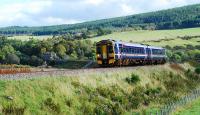
Ewan Crawford 30/09/2009
This was a small station to the west of the Pool of Sourden and just west of Bridge Sourden. An early closure it existed for 18 years. The 1862 opening of the line between Elgin East and Rothes led to its closure in 1866 and eventually led to the closure of the line in 1880. The track remained in place for some time afterwards.
...

Ewan Crawford 06/10/2018
This was a station with staggered platforms and a fine building on the northbound platform, at the south end.
...

Brian Haslehust 12/08/1965

Ewan Crawford //1997
This was a single platform station with a large timber building. It was, briefly, the terminus of the line until it was extended south over the River Spey by the Craigellachie Bridge to Strathspey Junction. The station was to be renamed Dandaleith in 1864, with Strathspey Junction becoming Craigellachie [2nd].
...
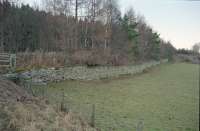
Ewan Crawford 02/02/1997
This was a single track viaduct of four spans to the north of Craigellachie [2nd] station and just south of Dandaleith station. The Morayshire Railway was to open to Dandaleith (then called Craigellachie) while this viaduct was completed, then extended to Craigellachie [2nd], then called Strathspey Junction.
...

Ewan Crawford 01/02/1997
This was a three platform station and junction. There were two platforms on the route between Elgin East and Keith via Dufftown and one platform on the Strathspey route to Boat of Garten. To the north on the Elgin route the line almost immediately crossed the Craigellachie Bridge to reach Dandaleith.
...
See also
Strathspey Railway
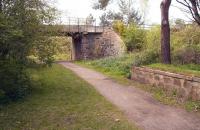
John Furnevel 20/05/2012

Brian Haslehust 12/08/1965
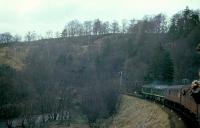
Colin Kirkwood 25/03/1967
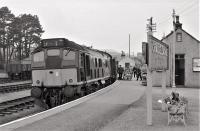
Brian Haslehust 12/08/1965
Elgin to Rothes
This junction was east of Elgin [GNSR] station. The junction was formed in 1862 when the course of the original portion of the Morayshire Railway from Elgin to Lossiemouth of 1852 was met by its later route via Longmorn to Rothes of 1862.
...
This was a two platform station with a passing loop. The main station building was on the northbound platform with a smaller building on the southbound. Both were in timber.
...
See also
Glenlossie Railway

...
Bill Roberton //1978

Brian Haslehust 10/08/1965
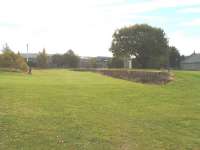
John Gray 14/10/2005
This platform served Coleburn Distillery. To the south was a passing loop with a signal box and sidings for the distillery. The sidings were on the west side of the line and served from the south (the north end of the loop). A siding ran from the south end of the loop to a gravel pit on the west side of the line.
...
A halt, also known as Birchfield Siding. The platform was on the west side of the single line. It was a little north of the house and level crossing at Birchfield.
...
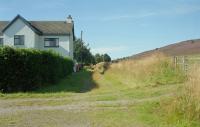
Ewan Crawford //1999
This was a station with staggered platforms and a fine building on the northbound platform, at the south end.
...

Brian Haslehust 12/08/1965

Ewan Crawford //1997
Elgin Connection
This closed station still exists, the substantial building now in use as business premises. To the south of the building the railway still runs, providing access to the terminus's goods yard.
...

Crinan Dunbar 06/09/2021

David Bosher 15/06/2019

David Bosher 15/06/2019

Crinan Dunbar //1982
A junction opened in 1858 between the 1852 Morayshire Railway and the 1858 Inverness and Aberdeen Junction Railway.
...
See also
Inverness and Aberdeen Junction Railway
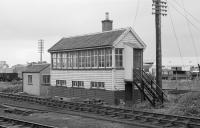
Bill Roberton //1977
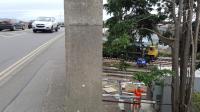
Crinan Dunbar 14/10/2017
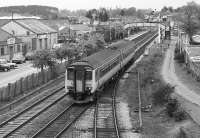
...
Bill Roberton //1991
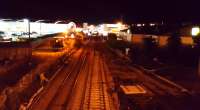
Crinan Dunbar 11/10/2017











